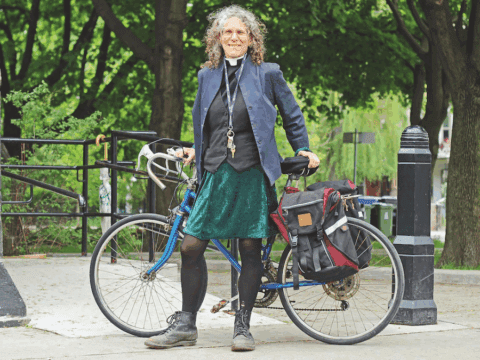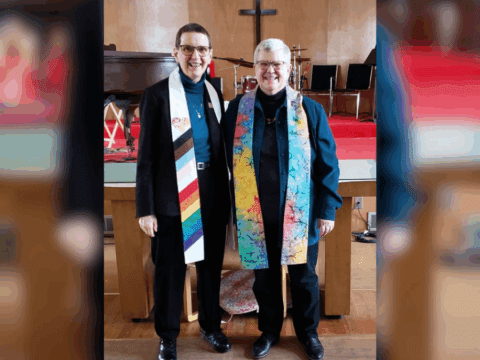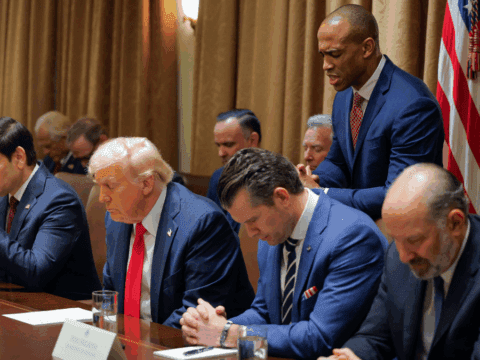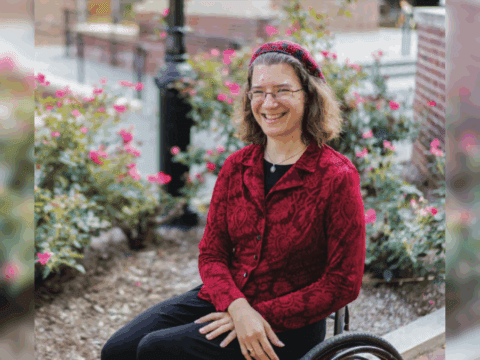Late one sunny Saturday morning about a year and a half ago, my cellphone rang as I was heading out to the garden at my home in Toronto with my coffee and my morning paper. It was my big sister, Karen, calling from California. “You’re not going to believe this,” she said, sounding exhausted. “I’ve just found out I have breast cancer.”
Actually, I didn’t have any trouble believing it. Not because of the statistics: about 26,000 Canadian women and over 250,000 women in the United States will be diagnosed with breast cancer in 2017. Or because Karen had already had cancer. Or even because at least five women in my circle of friends had been treated for it in the last few years.
The news didn’t surprise me because I have it too. In fact, when this story is published, it will be almost two and a half years since I learned about my own breast cancer.
Two sisters, two countries, two cancers. On the surface of it, our experiences were very similar: we both received excellent treatment, we had lots of support and we’re recovering well. But there were some important differences that I think are worth talking about.
More than half a million women around the world die of breast cancer every year, and yet nobody knows for sure who will get it or why. Lots of environmental and lifestyle factors have been associated with higher risk: how much you exercise, what you eat, how much you weigh and whether you smoke or have had hormone replacement therapy. But the two most significant risk factors are simply being a woman and getting older.
Karen is 63 — four years older than me. Her three children are grown, and she lives with her husband, John, in a small town outside Los Angeles. I live in Toronto and have two teenagers, a new husband and a thriving communications business.
Karen survived a brain tumour when she was 37 and hasn’t worked since. But we’re both healthy and fairly active. I’ve never smoked, and Karen stopped a few years ago. There’s no history of breast cancer in our family, and we’ve both tested negative for mutations in BRCA1 and BRCA2, the genes that have been identified with breast cancer.
We both found our tumours from a mammogram. I hadn’t had a mammogram since my first one at age 50. Every year, my doctor would give me a requisition, and every year, I’d find it crumpled at the bottom of my bag several months later. I was always too busy managing my company or looking after my kids. And I just never thought I would get cancer.
Things changed when I met my boyfriend, Jim. I was happier and taking better care of myself, and so finally, at the age of 56, I took the time to go for my scan. The test showed a bit of calcification, and the radiologist thought it would be worth coming back for an ultrasound. “There’s no need to worry,” the nurse said on the phone. “On a scale of one to six, you’re a zero. We just need to complete your file.”
It took the ultrasound and a second mammogram to find two large masses that not even my doctor had been able to feel. Together, the tumours were over six centimetres long.
Karen was more careful than I was. She’d been told she had dense breasts, and so she went to a breast clinic every year for an ultrasound-guided mammogram. Her latest test had come back clear, but when she let the clinic know about my diagnosis, they asked her to come in for another mammogram, this time guided by MRI (magnetic resonance imaging). That’s when they found a two-centimetre lump — exactly a year after they’d found mine.
It was June 2015, and I was packing up to move in with Jim. We’d just found the perfect house and were descending on the place on the July 1 weekend — me with two teenagers and a house full of stuff, and Jim (whose children are grown) with his collection of antiques and walls of art and photographs.
Work was busy too. On the day of my ultrasound, I was worried about getting to a client meeting on time with my business partner, Shelley. So I was pretty shocked when the technician brought in a radiologist, who explained that she was going to perform a biopsy on the spot. When I asked whether I should be worried, the radiologist said, “There’s no point until we know there’s something to be worried about.” That wasn’t very reassuring, but I pulled on my suit and dashed down to the meeting 30 minutes late, making an excuse and hiding how shaken up I was.
A few days later, as Shelley and I were getting ready for a big client presentation, I got the call. It felt exactly like you’d expect it to, like everything had changed in an instant. And oddly, it felt almost inevitable. Friends all around me had cancer. I’d postponed my mammograms for so long, it almost served me right.
I called the client and cancelled the presentation indefinitely. Jim dropped everything and met me at the hospital. The next day, I told my children, whose father had survived throat cancer two years earlier, “So, I’m going to have chemotherapy like your dad did. And I’m going to be fine, just like he is.” They didn’t know what to say.
A few weeks later, an MRI revealed the tumours were larger than we’d thought and the cancer was likely moving into my lymphatic system. My surgeon recommended a single mastectomy with a biopsy of my lymph nodes to see how far the cancer had spread, followed by chemo and radiation. Surgery was set for July 15.
I worked late the night before. And just after I sent a file to a client, it occurred to me that I’d better make sure my will and insurance policies were up to date. Just in case. So I scrambled to get everything in order. And then I lay awake with a real sense of dread.
The surgery went without a hitch, and I recovered pretty quickly. About a month later, I was on the train to Montreal to speak at a conference. I wore a breast prosthetic I’d bought before I left, and nobody was any the wiser.
Chemo started that September, and the six treatments weren’t easy. I wasn’t nauseous, but during my last three treatments I had to immerse my fingers and toes in ice for an excruciating 90 minutes to prevent my nails from blackening and falling off. There were other side-effects too: my body was puffy and achy, I developed mouth sores and body rashes, and I shuffled when I walked thanks to weakened joints. During the worst of it, my legs were so swollen that none of my shoes or boots fit.
I lost my hair gradually, starting about 12 days after my first chemotherapy session. A friend offered to take me wig shopping. “That’s one thing I can help you with,” she said. I work in a corporate world and needed something that wouldn’t draw attention. “You’re buying privacy,” explained the owner of the salon, who had lost his hair from cancer too. He found a wig that was a close match to my own hair, and I had my hairdresser highlight and cut it so it looked as similar to my usual style as possible.
Karen’s experience was different in many ways. Her tumour was much smaller, so on the recommendation of the clinic she opted for a lumpectomy with a simultaneous cosmetic reduction of the other breast. During the surgery, Karen’s doctor also removed some lymph nodes and found cancerous cells in one of them.
“We had all been so sure it would be simple, because the tumour was so small,” she says. “But when I learned that the cancer had moved to my lymph node, I was terrified and asked the doctor to go back and just take the whole thing off.” Instead, the oncologists recommended chemo and radiation, assuring her it would be enough to stop the disease from spreading.
Karen’s surgery went smoothly enough, but there were complications when one of her incisions wouldn’t heal. “It was preventing me from starting my chemotherapy, and the doctors were disagreeing about what to do. First, they tried hyperbaric oxygen therapy to speed the healing process, but that was taking too long. In the end, they took me into surgery a second time and fixed it.”
And she had to contend with American-style billing. “Just as I was getting ready to head to the operating room, a tall man in a nice suit came in and told us he had to have a cheque before they would go ahead. ‘It’s our new policy because people aren’t paying their bills.’ We paid him, of course, but it seemed absolutely outrageous — especially when you’re frightened and sick.”
Like me, Karen had six chemotherapy treatments, but her side-effects weren’t as severe, and she didn’t have to put her nails in ice. “My body ached, my legs swelled near the end, and my nails were discoloured and sensitive. But I didn’t have mouth sores, and I never lost my appetite.” We both had 25 rounds of radiation, which was easy after the chemo.
During Karen’s treatment, I found myself playing the role of big sister. We talked on the phone a lot. I read her reports and told her what to ask the doctors. We decided I would visit her when John was away on business. That turned out to be just before her fourth chemo treatment, so she had the energy to walk along the ocean, go out for coffee and take me to local sites.
One morning, she pulled out a file folder with her medical bills as we were drinking our coffee. As I flipped through the three-inch pile of papers, I couldn’t believe what I was seeing. She’d been to just two hospitals and three clinics throughout her treatment, but there were invoices from almost 50 different service providers — pathologists, imaging centres, radiologists, plastic surgeons, anesthesia services, blood labs — people she didn’t know, asking for money for services she’d never heard of.
‘The stress of having to negotiate with suppliers and the insurance company — all while you’re in crisis mode and trying to deal with getting well — is a real hardship.’ — says my sister, Karen.
In Ontario, we don’t see any bills, so the costs are invisible. In the United States, the health-care system leaves the administration in the hands of the patient. “It’s a huge source of frustration and aggravation,” Karen told me. “The time and effort you have to put into trying to understand who’s billing you and why, and the stress of having to negotiate with suppliers and the insurance company — all while you’re in crisis mode and trying to deal with getting well — is a real hardship. I have to question everything, or I end up paying more than I owe. Can you imagine if you didn’t speak English well? Or if you were totally incapacitated by your illness and didn’t have help?”
Together we had a look at how much Karen’s treatment cost her. For an annual premium of $4,320, John’s workplace health insurance covers her medical costs, medications and $500 for a wig. But she pays an annual deductible of $8,000 for medical fees and $800 for medications. (They can pay the deductible in pre-tax dollars using money from a Health Savings Account that their employer also contributes to, like an RRSP but dedicated to medical expenses.)
That made me curious about how much my own treatment cost. Almost all of my medical expenses are paid by the Ontario Health Insurance Plan (OHIP). My out-of-pocket expenses were about $750 in total. My wig was $1,200, but I was able to claim it as a health expense on my income tax return. My breast prosthetic was $400, but Ontario’s Assistive Devices Program covered most of that. The Ontario Breast Screening Program (funded by the Ministry of Health and Long-Term Care and administered by Cancer Care Ontario) covered my mammograms. My own company benefits plan covered most of the cost of my medications.
What I don’t have a handle on is how much of what I contribute to the province through my taxes is allocated to health care. What I do know is that when I really needed it, the system didn’t let me down. I received fabulous care from some of the world’s leading practitioners and never once had to think about the cost.
Astonishingly, Karen’s insurance report shows that the gross amount billed to the insurance company was just over $450,000. Compare that to $46,893, the mean cost for two years of treatment for stage II cancer in Ontario between 2005 and 2009. I realize this isn’t an exact comparison, but the difference is shocking.
Karen’s insurance company negotiated this $450,000 bill down to just under $150,000, and she ended up owing roughly $16,000 in deductibles ($14,500 for medical costs and $1,500 for prescriptions), plus two and a half years of premiums (roughly $7,500). That puts the total out of pocket for her cancer treatment at around $23,000. And that’s with health insurance.
About 28.2 million Americans don’t have health insurance, and this number will likely grow. So how do these people manage? Some hospitals and medical centres provide treatment to the uninsured, and some non-profit hospitals offer care to anyone who needs it, whether or not they can pay. Other resources, mandated under the Breast and Cervical Cancer Prevention and Treatment Act of 2000, extend Medicaid coverage for some women.
It’s been over a year and a half since I finished my treatments, and I’m feeling great. My hair has grown in and looks better than ever, my energy is back and all my scans are clear. Karen finished her treatments about eight months ago and is still struggling with lack of energy and some depression, which is just part of the process. And that’s not the end of it. We’re both now taking a drug that blocks estrogen action in breast cells, which should substantially reduce the risk of the cancer coming back.
Comparing our experiences has reminded me of just how lucky I am to be living in Canada. Karen and I both received great medical care, but Canada’s health-care system is simply more humane. I have access to excellent treatment whenever I need it, without facing huge bills or having to haggle with service providers. The Canada Health Act says this is what every Canadian resident is entitled to, and it certainly works for me.
















This article is a very readable portrayal of the different experiences for breast cancer patients in the US and Canada.
As an American who has lived in Ottawa, Canada for over two decades, I would like
permission to share this article with American politicians and public health specialist.
Thanks Broadview for remembering and republishing past stories that help Canadians recall and celebrate our access to the benefits of a mature and humane democracy.